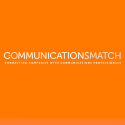Communications, Simplicity, and Behavior
Looking at simplicity through a behavioral lens offers a path to clearer communications and stronger brands that help companies, and ourselves as communicators, stand out in a complex world.
A new article for CommPRO.biz, “Simplicity, Communications, & Human Behavior: A Path to Reducing Complexity”, explores the importance of simplicity, its' financial benefits, what gets in the way, and how to achieve it.
By highlighting the effort required to process information, we gain a deeper appreciation for simplicity and why we must keep audience needs in mind.

“The point here is that communicators are asking audiences to process information on top of everything else they have to deal with. The simpler the message the better chance an audience will find the capacity to process it.”
This may seem obvious, but all too often it isn’t. The article notes that behaviors driven by ego or incentives to “sell” get in the way of simplicity and delivering value. (Read: “Tunnels and Funnels: Why We Make Bad Decisions & How We Can Make Better Ones”). The result? Communications that leave potential clients scratching their collective heads and asking, “What were you trying to say? Why should I care about this?”
Understanding this is the key to navigating the path to simplicity and its rewards. It provides a lens to view our communications and what it takes to engage others.

Getting to the essence of a story or message is hard. It requires communicators to reduce the work required of audiences and to be guided by what will resonate with clients, employees, or journalists.
There are compelling reasons to focus on simplicity. Research by Siegle+Gale, a global branding firm, that shows companies may be leaving $98 billion on the table if they don’t simplify their brands.
This focus on behavior takes us back to the public relations industry’s social science roots. It’s also driven by a fundamental recognition that “communications is not about pushing out messages, but two-way engagement.”
Last year, in a CommunicationsMatch Communicators-to-Communicators interview, The Museum of Public Relations' director, Shelley Spector, reminded industry professionals of the value of seeking inspiration from PR’s history.
What’s the takeaway? “By incorporating human behavior as an additional layer into our thinking about the value of simplicity in communications, we are more likely to work harder to find it, and realize its benefits”.
Click here to read the full article.
Simon Erskine Locke is founder & CEO of CommunicationsMatchTM. CommunicationsMatch offers communications & PR agency search, RFP, opinion survey tools and resources that help companies find, shortlist, and engage communications, digital marketing and branding agencies, consultants and freelancers by industry and communications expertise, location and size. Prior to founding CommunicationsMatch, Locke held senior corporate communications roles at Prudential Financial, Morgan Stanley, and Deutsche Bank, and founded communications consultancies.
